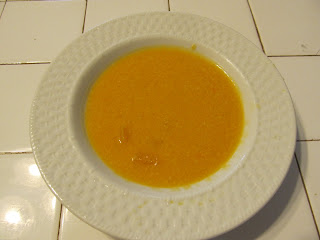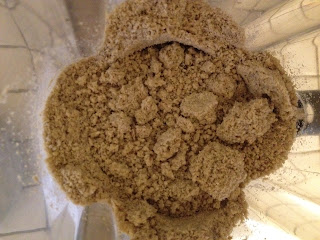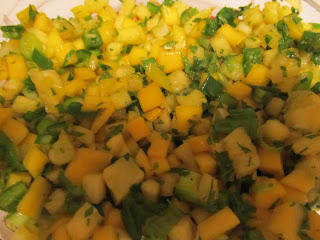When you say to most Americans "Tortilla", the first thing to come to mind is a flour or corn flatbread that is indigenous to our continent - south of the border.
The word "Tortilla" means "Little Cake", and in most countries refers to what I'm going to show all of you today. A Tortilla or Tortilla española (Spanish Tortilla) is like a potato omelet.
Ingredients:
2 lbs. Potatoes - any kind
*About 6 or 7 small potatoes, or 3 or 4 large potatoes.
1 small Onion - any kind
4 Cloves of Garlic
6 Eggs
1/2 c. Milk
1/4 c. Olive Oil for sauteéing
2 - 3 T. Olive Oil for the platter
*I'll explain later
Salt to taste
Directions:
1. Slice the Potatoes into 1/8" slices. Some slices should be halved or quartered, so that they're about 1 - 2 square inches in area.
2. Chop the entire Onion. Mince the Garlic or use a garlic press later.
3. Heat the 1/4 c. Olive Oil in a 10" Teflon skillet on medium heat.
4. Put the chopped Onion and minced Garlic into the oil. Let them sauté for about 1 minute.
5. Put the sliced Potatoes into the oil. Salt the mixture. Stir the potatoes and Onions together until the Potatoes are completely covered in oil. Cover with a lid and let the Potatoes cook, uncovering occasionally to stir until the Potatoes are soft and slightly browned - about 30 min.
6. While the Potatoes are cooking, beat the Eggs and Milk together.
 | |
| Just in case you didn't know what beaten eggs look like. |
8. When the eggs are beginning to cook, run a rubber spatula around the edge to just separate the eggs from the edge of the skillet. Cover again and cook until the egg is completely cooked on the top.
9. While the eggs are cooking, spread the 2 - 3 T. of Olive Oil on a large, round platter (12" + dia.).
10. With this step, you're going to have to be very careful. Uncover the skillet, and place the oiled platter on top of the skillet. Now, holding the platter to the skillet, carefully turn the skillet upside down over the platter. If you need, shake the skillet a little to make sure the Tortilla is completely unstuck from the skillet, and onto the platter. Remove the skillet, and place the skillet back onto the stove. Now, carefully slide the Tortilla back onto the skillet, slowly pushing it with a spatula.
11. Cook the Tortilla uncovered on its flip side for another 5 minutes.
12. While the Tortilla is finishing cooking, wash and dry the platter. When the Tortilla is ready, slide it from the skillet onto the platter, using the spatula. Slice the Tortilla like a pie to serve it.















































